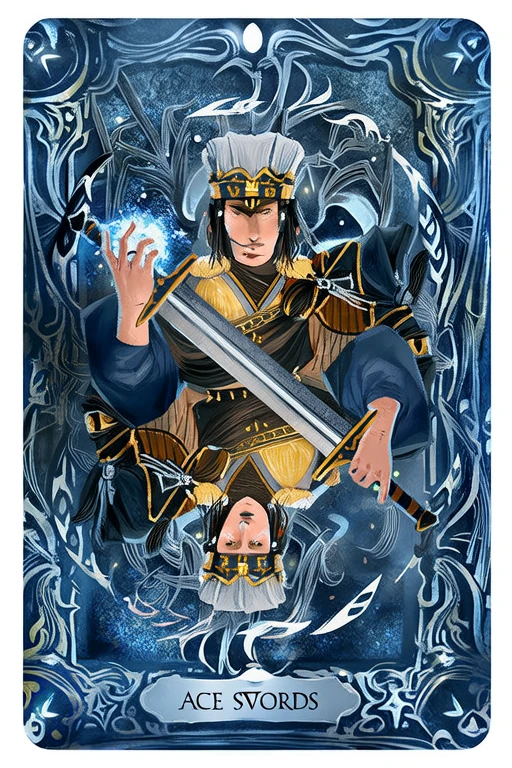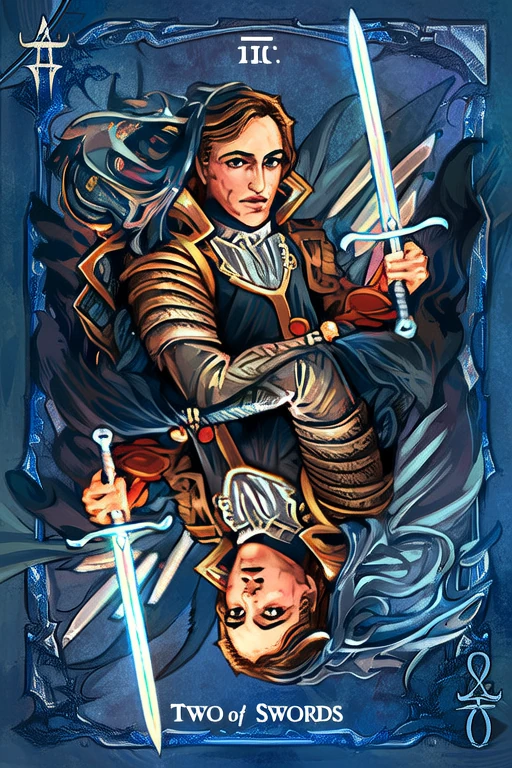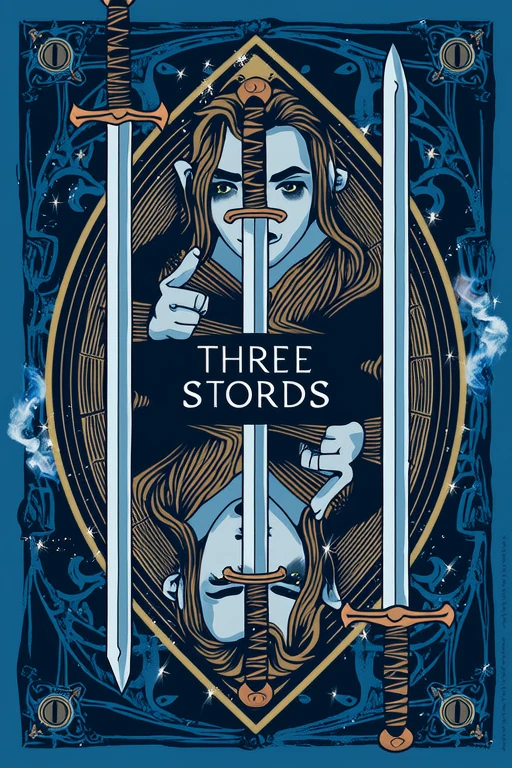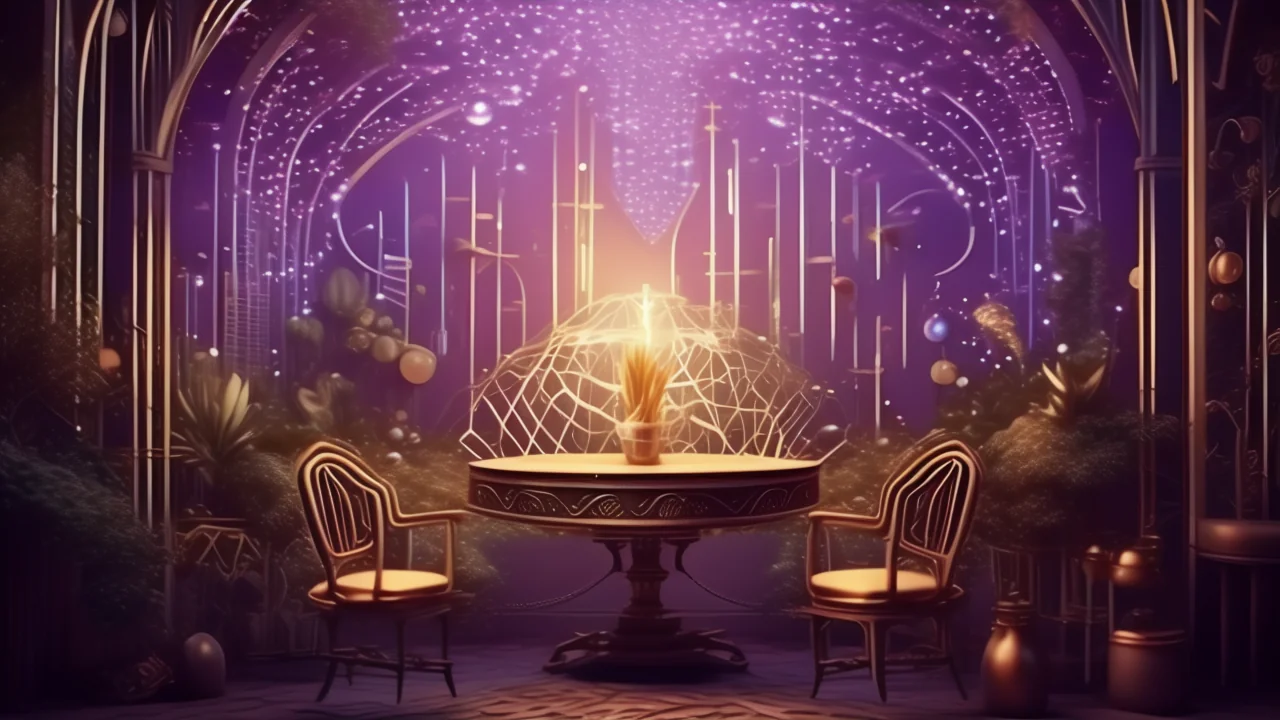
Eight of Swords
Discover the deep meaning of Eight of Swords with our free AI-powered tarot interpretation. Get instant, accurate readings based on advanced tarot knowledge.
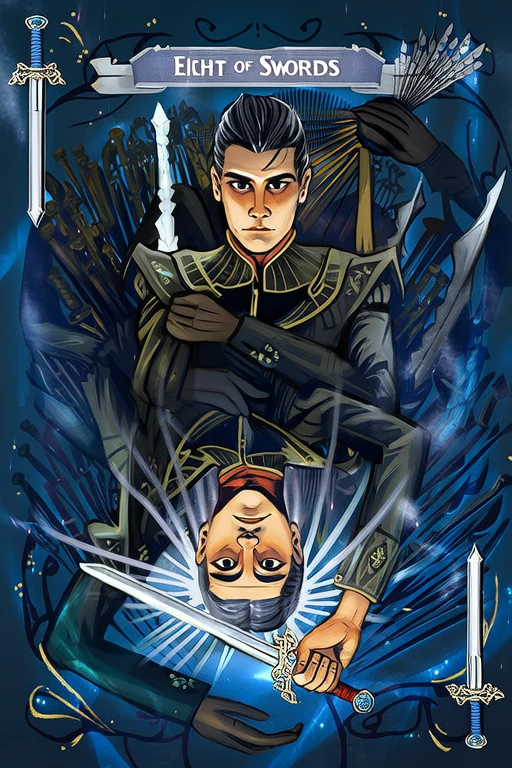
Keywords
Upright Meaning
Imprisonment, entrapment, isolation
Reversed Meaning
Open to change, facing fears, breaking free
Full Interpretation
The Eight of Swords represents feeling trapped, isolated, and unable to see a way out.
In-Depth Analysis
📜 Historical Background
The Eight of Swords holds a unique and evocative place in the tarot tradition, rooted in centuries of symbolic evolution and cultural transformation. As part of the Minor Arcana in the Tarot deck, the Eight of Swords belongs to the suit of Swords, which corresponds to the element of Air and governs intellect, communication, and conflict. Its origins trace back to early 15th-century Europe, particularly in northern Italy, where the first known tarot decks were created as playing cards before evolving into tools for divination and spiritual insight during the 18th and 19th centuries.
In the earliest surviving tarot decks, such as the Visconti-Sforza and Marseille Tarot, the Eight of Swords was often depicted with minimal symbolism, focusing primarily on the number eight and the visual repetition of the swords. The imagery was largely numerical and lacked the complex narratives seen in later esoteric decks. However, the card’s transformation began in earnest with the rise of the Hermetic and occult revival in the late 19th century, particularly through the work of the Hermetic Order of the Golden Dawn and A.E. Waite’s Rider-Waite-Smith Tarot (1909).
In the Rider-Waite-Smith tradition, the Eight of Swords is portrayed as a blindfolded woman standing amidst eight upright swords, surrounded by water and a distant boat. This image has since become the standard for many modern decks. The blindfold symbolizes confusion or self-imposed limitations, while the swords represent mental distress or emotional entrapment. The woman’s stillness and apparent inability to move reflect the internal paralysis that often accompanies fear, anxiety, or overthinking.
Across various cultures and historical periods, the imagery of the Eight of Swords has taken on different meanings. In some interpretations, the woman is seen as a victim of her own thoughts, while in others, she is a figure of resilience, waiting for clarity to emerge. In certain Eastern European traditions, the card has been associated with betrayal and the consequences of indecision, often linked to folk tales of individuals caught in webs of deceit or internal conflict.
Throughout the 20th and 21st centuries, the Eight of Swords has been reinterpreted in numerous tarot decks, from the Thoth Tarot by Aleister Crowley to the Wild Unknown and Modern Witch Tarot. Each version reflects the evolving understanding of the card’s symbolism, adapting to contemporary psychological and spiritual frameworks while maintaining its core themes of mental restriction and the need for liberation through self-awareness.
Symbolism & Imagery
The Eight of Swords is rich in symbolic meaning, with each element of its imagery contributing to a deeper understanding of its role in the tarot. The central figure is typically a blindfolded woman, standing still and surrounded by eight upright swords. Behind her lies a vast expanse of water, and in the distance, a small boat can be seen sailing away. Each of these components carries profound symbolic weight.
The blindfolded woman represents a state of confusion, self-imposed limitation, or emotional blindness. Her inability to see may symbolize a lack of clarity or a refusal to confront the truth of a situation. Often, this blindness is not literal but psychological—she is trapped not by external forces, but by her own fears, doubts, and negative thought patterns. The swords surrounding her are a direct representation of the mental and emotional conflicts that weigh heavily on her mind, reinforcing the idea of being overwhelmed by thoughts or circumstances.
The number eight is significant in numerology and tarot symbolism. It represents cycles, infinity, and the balance between material and spiritual realms. In the context of the Eight of Swords, the number may indicate that the situation is ongoing or that the querent is caught in a repeating pattern of anxiety or indecision. The swords themselves, as part of the suit of Air, are tied to intellect, communication, and conflict, suggesting that the struggle is primarily mental rather than physical.
The water beneath the woman's feet symbolizes the unconscious mind or emotional undercurrents. It suggests that the root of her distress may lie beneath the surface, requiring introspection to uncover. The distant boat, often interpreted as a potential escape or rescue, indicates that a solution exists—but the woman must first remove her blindfold and take action to reach it.
Interpretations of the Eight of Swords vary across cultures and traditions. In some European schools of thought, the card is associated with betrayal or the consequences of poor judgment, while in others, it speaks to the need for self-liberation and the courage to face one's fears. In the Rider-Waite-Smith tradition, it is commonly read as a sign of feeling trapped, powerless, or overwhelmed by negative thoughts.
When the card appears upright, it generally indicates a sense of being stuck in a difficult situation, often due to internal fears or limiting beliefs. The reversed position, however, suggests a turning point—either the beginning of clarity or the realization that the perceived limitations are not as insurmountable as they once seemed.
The Eight of Swords is closely connected to other cards in the tarot. It follows the Seven of Swords, which often deals with deception or betrayal, and precedes the Nine of Swords, which delves into deep anxiety or guilt. Together, these cards form a narrative arc of mental distress, culminating in the potential for release and healing found in the Ten of Swords.
Psychological Insights
From a psychological perspective, the Eight of Swords can be interpreted through the lens of Carl Jung's theory of archetypes and the collective unconscious. The blindfolded woman embodies the archetype of the 'Trapped Self,' a figure caught in a cycle of negative thinking and self-imposed limitations. This archetype often appears in dreams or personal crises when an individual is overwhelmed by internal conflicts, fears, or past traumas. The card encourages the querent to confront these mental barriers and recognize that the perceived prison is often a construct of the mind.
In modern life, the Eight of Swords serves as a powerful metaphor for anxiety, indecision, and the paralysis that can come from overthinking. Many individuals face situations where they feel trapped—not by external forces, but by their own thoughts and beliefs. Whether it's a career dilemma, relationship uncertainty, or financial stress, the card reminds us that sometimes the greatest obstacles are the ones we create in our minds. It encourages self-reflection and the courage to remove the blindfold, seeking clarity and taking proactive steps toward resolution.
For personal growth and self-awareness, the Eight of Swords invites individuals to examine their limiting beliefs and recognize the patterns that keep them stuck. It challenges the querent to question whether their fears are based on reality or distorted perceptions. By acknowledging these mental barriers, one can begin the process of reframing thoughts and reclaiming personal agency.
In therapeutic and counseling settings, the Eight of Swords is often used to explore themes of anxiety, depression, and cognitive distortions. Therapists and counselors may use the card to help clients identify the root causes of their distress and develop strategies to break free from negative thought cycles. Mindfulness practices, cognitive-behavioral techniques, and guided visualization are often recommended in conjunction with tarot readings featuring this card.
Within modern spiritual practices, the Eight of Swords is frequently associated with shadow work and inner healing. It serves as a reminder that true liberation comes from facing one's fears and embracing self-awareness. Many spiritual seekers use this card as a tool for meditation, journaling, or energy healing, focusing on releasing mental burdens and cultivating clarity. Whether used in tarot therapy, personal reflection, or intuitive guidance, the Eight of Swords remains a vital symbol of the journey from confusion to empowerment.
Correspondences
The Eight of Swords is deeply connected to the element of Air, aligning it with the intellectual and communicative aspects of the mind. Astrologically, it corresponds to the planet Mercury, which governs thought processes, communication, and analytical reasoning. This planetary influence underscores the card’s association with mental clarity, cognitive challenges, and the power of perception. Mercury’s dual nature—both messenger and trickster—also reflects the card’s themes of confusion and the potential for enlightenment through self-awareness.
In terms of gemstones and crystals, the Eight of Swords resonates with stones that promote mental clarity and emotional balance. Clear quartz, known as the 'master healer,' is particularly effective for amplifying thoughts and intentions, making it ideal for those seeking clarity. Amethyst, with its calming properties, can help soothe anxiety and promote spiritual insight, while hematite grounds the mind and protects against negative energy. These stones can be used during meditation or carried as talismans to support the card’s energies.
Herbs and essential oils associated with the Eight of Swords include lavender, which encourages relaxation and mental clarity, and rosemary, known for its ability to enhance memory and focus. Frankincense and sandalwood oils are also beneficial for grounding and spiritual reflection, helping to dissolve mental blocks and promote inner peace.
Seasonally, the Eight of Swords is most aligned with late summer and early autumn, a time of transition where the mind begins to turn inward. This period mirrors the card’s themes of introspection and the need to reassess one’s thoughts and direction.
Energetically, the Eight of Swords is linked to the throat chakra (Vishuddha), which governs communication and self-expression. Balancing this chakra can help individuals articulate their thoughts more clearly and break free from mental constraints. Additionally, the card’s numerological significance lies in the number eight, which symbolizes infinity, cycles, and the balance between material and spiritual realms. This reinforces the idea of ongoing transformation and the potential for liberation through awareness.
❓ Frequently Asked Questions
The Eight of Swords is one of the more psychologically complex cards in the tarot, often raising questions among both beginners and seasoned readers. Below are some of the most frequently asked questions and clarifications about this card, along with practical advice for interpretation and reading techniques.
**What does the Eight of Swords mean in a love reading?** In romantic contexts, the Eight of Swords often indicates a sense of emotional paralysis or confusion within the relationship. It may suggest that one or both partners are feeling trapped by their own thoughts or fears, leading to communication breakdowns or emotional distance. The card encourages self-reflection and honest dialogue to break free from misunderstandings.
**Is the Eight of Swords always negative?** While traditionally associated with feelings of being stuck or overwhelmed, the Eight of Swords is not inherently negative. Rather, it serves as a wake-up call to examine one’s mental and emotional patterns. When read in a reversed position, it often signals the beginning of clarity or the realization that the perceived limitations are not as rigid as they seem.
**How should beginners interpret the Eight of Swords?** Beginners often misinterpret this card as a sign of external imprisonment or unavoidable fate. However, the key message of the Eight of Swords is internal rather than external—it’s about the mind’s ability to trap or free the individual. Encourage new readers to look beyond the surface and explore the psychological and emotional layers of the card.
**What spreads work best for the Eight of Swords?** The card works well in spreads that explore internal conflicts or decision-making processes. The Three-Card Past-Present-Future spread can help identify how mental patterns have developed and how they may evolve. The Celtic Cross is also effective, particularly when examining the querent’s mindset or hidden fears influencing the situation.
**How does the Eight of Swords interact with other cards?** When paired with The Chariot or The Sun, the Eight of Swords suggests that clarity and action can lead to victory over mental obstacles. Conversely, when appearing with The Tower or Five of Swords, it may indicate a painful but necessary realization that leads to liberation.
**What practical advice can be given when this card appears?** Encourage the querent to take a step back, assess their thoughts objectively, and consider whether their fears are based on reality or distortion. Journaling, meditation, and talking to a trusted friend or counselor can be helpful tools for navigating the mental challenges this card represents.
